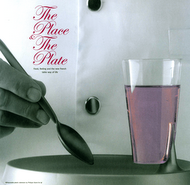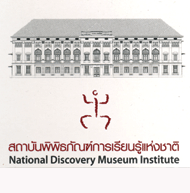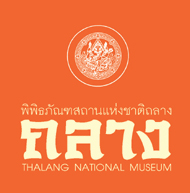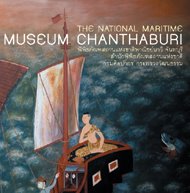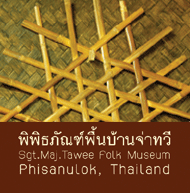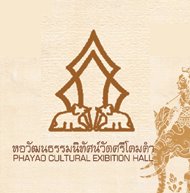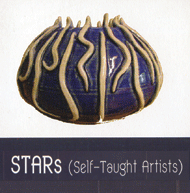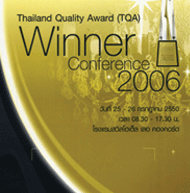11
 *our client code
*our client code
0124/2007
The National
Maritime Museum
Chanthaburi
Thailand
Printed;
Museum Guide





The National Maritime Museum Chanthaburi is the first and only Museum that has kept ten of thousands of undersea artifacts. The Museum is under patronage of the National Museum of The Department of Fine Arts and Ministry of Culture. The design of the Museum is a twin building with an area of 3,500 square meters, situated within Khai Nuenwong. Fort Nuenwong is an ancient fortress built to fight off the Burmese troops during King Rama III reign.
Since 1974, The Department of Fine Arts had begun to seriously study undersea artifacts in Thailand. The study consists the learning of people who live by the sea and their cultures such as traveling, trading and their relations between other cities from past to present times. In 1990, The Department of Fine Arts had set up a study Centre for undersea ancient artifacts at Tha Chalab and preservation centre at Khai Nuenwong, Tambon Bang Kaja, Chanthaburi province.
The expedition of recovering undersea artifacts had expanded their capabilities. Large numbers of artifacts from sunken ships had been recovered. In supplement to this, in 1992 the Royal Thai Navy had captured and confiscated a large lot of undersea artifacts from foreign pirates who entered Thai sea space and were turned over to The Department of Fine Arts. There are over 20,000 pieces that are well kept with the Underseas Bureau Office at Khai Nuenwong, Tambon Bang Kaja, Amphur Muang, Chanthaburi province.
Therefore, 1n 1994 the Department of Fine Arts immediately came up with their policy to construct the National Maritime Museum to provide a wide range of knowledge about undersea life and the history of The Royal Thai Navy. And in the same year, the Thai government had approved this project and whereas the Museum will be situated within the province so that many could come and learn about undersea life, ecosystem, local society, economy and local cultures. By doing so, The Department of Fines Arts had merged the local Museum with the Maritime Museum, which today is known as the National Maritime Museum Chanthaburi.
The National Maritime Museum
Chanthaburi ,Thailand
Since 1974, The Department of Fine Arts had begun to seriously study undersea artifacts in Thailand. The study consists the learning of people who live by the sea and their cultures such as traveling, trading and their relations between other cities from past to present times. In 1990, The Department of Fine Arts had set up a study Centre for undersea ancient artifacts at Tha Chalab and preservation centre at Khai Nuenwong, Tambon Bang Kaja, Chanthaburi province.
The expedition of recovering undersea artifacts had expanded their capabilities. Large numbers of artifacts from sunken ships had been recovered. In supplement to this, in 1992 the Royal Thai Navy had captured and confiscated a large lot of undersea artifacts from foreign pirates who entered Thai sea space and were turned over to The Department of Fine Arts. There are over 20,000 pieces that are well kept with the Underseas Bureau Office at Khai Nuenwong, Tambon Bang Kaja, Amphur Muang, Chanthaburi province.
Therefore, 1n 1994 the Department of Fine Arts immediately came up with their policy to construct the National Maritime Museum to provide a wide range of knowledge about undersea life and the history of The Royal Thai Navy. And in the same year, the Thai government had approved this project and whereas the Museum will be situated within the province so that many could come and learn about undersea life, ecosystem, local society, economy and local cultures. By doing so, The Department of Fines Arts had merged the local Museum with the Maritime Museum, which today is known as the National Maritime Museum Chanthaburi.
The National Maritime Museum
Chanthaburi ,Thailand
-----------------





Inspired by his love for and awareness of the value of folk utensils, Sergeant Major Tawee Buranakhet, widely recognized as “Sergeant Major Tawee” or “Uncle Sergeant Major”, has made every endeavor to buy and collect them for more than 30 years. With his money and through his wholehearted dedication to conserving these items, a personal museum known as Sergeant Major Tawee Folk Museum was eventually established.
During the early years of his strive, Sgt. Maj. Tawee found it was truly hard to get each item due to his impoverished financial status. Subsequently, he worked for a Buddha’s image casting factory and his financial status improved. He thus got around to buy more and more utensils for his collection. He underscored those unwanted or discarded by the owners so that the items would not die out over time and changing ways of life.
Located on Wisutthi Kasat Road, Phitsanulok’s Meuang District, Sergeant Major Tawee Folk Museum stands opposite to Burana Thai Buddha’s image casting factory. It houses hundreds of folk utensils, be it sizeable or tiny, ranging from basketry, earthenware, ancient kitchenware to agricultural tools. These include manually-operated watermills, rice mills, sugarcane squeezers, and animal traps such as mouse traps and cockroach traps. Each item on display perfectly exemplifies Thai local intellect as well as the wisdom of local people.
Sgt. Maj. Tawee Folk Museum
Phitsanulok, Thailand
During the early years of his strive, Sgt. Maj. Tawee found it was truly hard to get each item due to his impoverished financial status. Subsequently, he worked for a Buddha’s image casting factory and his financial status improved. He thus got around to buy more and more utensils for his collection. He underscored those unwanted or discarded by the owners so that the items would not die out over time and changing ways of life.
Located on Wisutthi Kasat Road, Phitsanulok’s Meuang District, Sergeant Major Tawee Folk Museum stands opposite to Burana Thai Buddha’s image casting factory. It houses hundreds of folk utensils, be it sizeable or tiny, ranging from basketry, earthenware, ancient kitchenware to agricultural tools. These include manually-operated watermills, rice mills, sugarcane squeezers, and animal traps such as mouse traps and cockroach traps. Each item on display perfectly exemplifies Thai local intellect as well as the wisdom of local people.
Sgt. Maj. Tawee Folk Museum
Phitsanulok, Thailand






